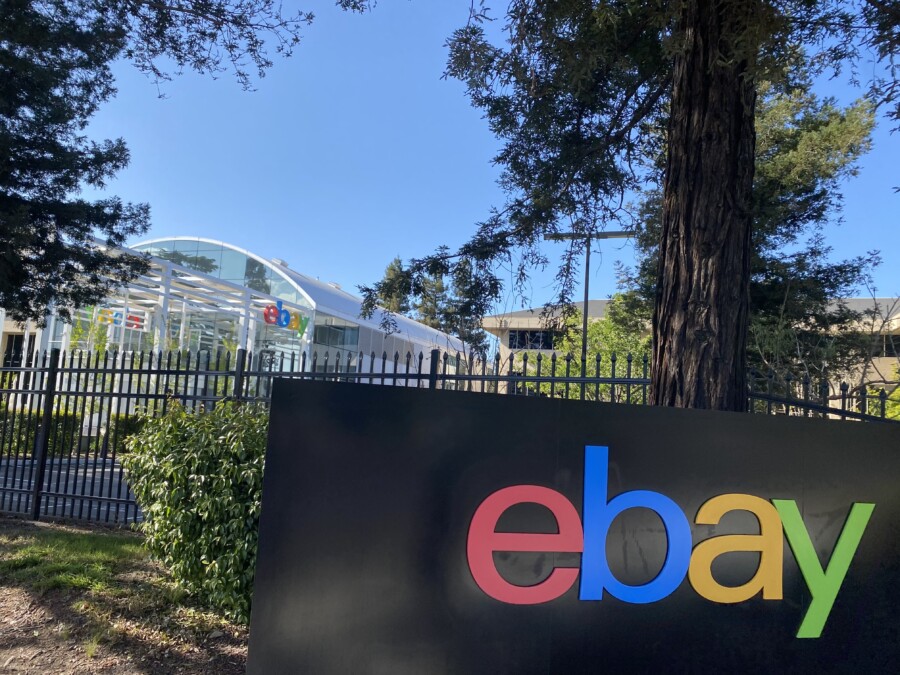Colombia has recently implemented regulations to promote renewable energy production among local communities and indigenous groups. Currently, only 1% of the country’s energy comes from alternative sources. Under the new regulations, community leaders, including Afro-Colombians, can form partnerships with public and private companies to generate power from wind farms, small hydroelectric projects, and biofuels. The aim is to diversify Colombia’s energy matrix, which is currently dominated by large hydroelectric dams that have negative impacts on communities and the environment.
Since 2019, over 50 wind and solar projects have been announced in Colombia, with a planned generation capacity of 2.43 gigawatts in wind energy and 0.1 gigawatts in solar energy. However, none of these projects are currently operational. Some companies, such as Italy’s Enel, have indefinitely postponed their projects, citing local protests as a hindrance to their investments.
Colombia has been recognized as one of the deadliest countries for environmentalists, with numerous activists being killed in recent years. This highlights the importance of promoting renewable energy as a sustainable and environmentally friendly alternative. By encouraging local communities and indigenous groups to participate in renewable energy production, Colombia aims to empower these marginalized groups and reduce its reliance on fossil fuels.
In addition to the new regulations, the Colombian government has also opened bids for its first offshore wind farms, signaling its commitment to expanding renewable energy sources. With more than 70% of the country’s power currently being generated by large hydroelectric dams, diversifying the energy mix is crucial for the long-term sustainability of Colombia’s energy sector. By embracing renewable energy, Colombia can reduce its carbon footprint, protect the environment, and promote social and economic development in indigenous communities and local areas.
Original news source: Renewable energy drive for indigenous groups in Colombia (BBC)
🎧 Listen:
Slow
Normal
Fast
📖 Vocabulary:
| 1 | implemented | Put into effect or action |
| 2 | indigenous | Originating or occurring naturally in a particular place; native |
| 3 | partnerships | Collaborative arrangements where parties agree to work together |
| 4 | diversify | To make or become more varied or different |
| 5 | matrix | An arrangement or network in which something operates or is organized |
| 6 | dominated | Controlled or influenced by a powerful leader or entity |
| 7 | hydroelectric | Related to the generation of electricity using flowing water |
| 8 | postponed | Delayed until a later time or date |
| 9 | hindrance | An obstacle or barrier to progress or achievement |
| 10 | activists | Individuals who actively work to bring about political or social change |
| 11 | marginalized | Excluded from mainstream society or part of a group that is treated as insignificant |
| 12 | reliance | Dependence on something or someone for support or maintenance |
| 13 | bids | Offers made in a competitive situation, typically for assets or to undertake work |
| 14 | sustainability | The ability to be maintained at a certain rate or level without depleting resources or causing severe ecological damage |
| 15 | carbon footprint | The total amount of greenhouse gases produced directly and indirectly by human activities |
Group or Classroom Activities
Warm-up Activities:
– News Summary
Instructions: Students will read the article and then write a summary of the main points in their own words. They should focus on the key information, such as the new regulations in Colombia, the current energy sources, and the goals for renewable energy production.
– Opinion Poll
Instructions: Divide the class into pairs or small groups. Each group will discuss their opinions on renewable energy and its importance in Colombia. They can use the information from the article to support their arguments. After the discussion, each group will present their opinions to the class, and a poll will be conducted to see which opinion is the most popular.
– Vocabulary Pictionary
Instructions: Give each student a list of vocabulary words from the article, such as renewable energy, indigenous groups, hydroelectric dams, etc. Students will take turns drawing a picture to represent one of the words, while the rest of the class guesses what the word is. This activity will help students practice their vocabulary and comprehension skills.
– Pros and Cons
Instructions: Divide the class into two groups. One group will list the pros of promoting renewable energy in Colombia, while the other group will list the cons. After brainstorming, each group will present their arguments to the class, and a debate can be held to discuss the different perspectives.
– Future Predictions
Instructions: Students will work in pairs or small groups to discuss and predict the future of renewable energy in Colombia. They should consider the current situation, the new regulations, and any challenges or opportunities that may arise. Each group will present their predictions to the class, and a discussion can be held to explore different possibilities.
🤔 Comprehension Questions:
1. What percentage of Colombia’s energy currently comes from alternative sources?
2. What types of renewable energy projects can community leaders form partnerships for?
3. Why are large hydroelectric dams a concern for communities and the environment?
4. How many wind and solar projects have been announced in Colombia since 2019?
5. Why have some companies postponed their renewable energy projects in Colombia?
6. Why is promoting renewable energy important in Colombia?
7. What has the Colombian government opened bids for?
8. What are the potential benefits of embracing renewable energy in Colombia?
Go to answers ⇩
🎧✍️ Listen and Fill in the Gaps:
Colombia has recently implemented (1)______ to promote renewable energy production among local communities and (2)______ groups. Currently, only 1% of the country’s energy comes from alternative sources. Under the new regulations, community leaders, including Afro-Colombians, can form partnerships with public and private companies to generate power from wind (3)______, small hydroelectric (4)______, and biofuels. The aim is to diversify Colombia’s energy matrix, which is currently dominated by large (5)______ dams that have negative impacts on communities and the environment.
Since 2019, over 50 wind and solar projects have been announced in (6)______, with a planned generation (7)______ of 2.43 gigawatts in wind energy and 0.1 gigawatts in solar energy. However, none of these projects are currently operational. Some companies, such as Italy’s Enel, have indefinitely postponed their projects, citing local protests as a (8)______ to their investments.
Colombia has been recognized as one of the deadliest (9)______ for environmentalists, with numerous (10)______ being killed in recent years. This highlights the importance of promoting renewable energy as a sustainable and environmentally friendly alternative. By (11)______ local communities and indigenous groups to participate in renewable energy production, Colombia aims to empower these marginalized groups and reduce its reliance on fossil fuels.
In addition to the new regulations, the Colombian (12)______ has also opened bids for its first offshore wind farms, signaling its commitment to (13)______ renewable (14)______ sources. With more than 70% of the country’s (15)______ currently being generated by large hydroelectric dams, diversifying the energy mix is crucial for the long-term (16)______ of Colombia’s energy sector. By embracing renewable energy, Colombia can reduce its carbon footprint, protect the environment, and promote social and economic development in indigenous communities and local areas.
Go to answers ⇩
💬 Discussion Questions:
Students can ask a partner these questions, or discuss them as a group.
1. What is your opinion on Colombia’s new regulations to promote renewable energy production among local communities and indigenous groups?
2. How would you feel if your community formed partnerships with public and private companies to generate power from renewable sources?
3. Do you think it is important for countries to diversify their energy matrix? Why or why not?
4. What are some potential benefits of promoting renewable energy as a sustainable alternative to fossil fuels?
5. How do you think empowering marginalized groups through renewable energy production can contribute to social and economic development?
6. Do you believe that local protests should be a hindrance to renewable energy projects? Why or why not?
7. What steps do you think the Colombian government should take to ensure the success of its wind and solar projects?
8. How do you think the recognition of Colombia as one of the deadliest countries for environmentalists affects the promotion of renewable energy in the country?
9. What are some potential challenges that Colombia may face in reducing its reliance on fossil fuels?
10. How do you think the opening of bids for offshore wind farms will impact Colombia’s renewable energy sector?
11. Do you think it is important for countries to reduce their carbon footprint? Why or why not?
12. What role do you think renewable energy can play in protecting the environment?
13. How do you think the promotion of renewable energy can contribute to the overall sustainability of a country’s energy sector?
14. What are some potential benefits and drawbacks of relying heavily on large hydroelectric dams for energy generation?
15. Do you believe that promoting renewable energy can help address the issue of climate change? Why or why not?
Individual Activities
📖💭 Vocabulary Meanings:
Match each word to its meaning.
Words:
1. implemented
2. indigenous
3. partnerships
4. diversify
5. matrix
6. dominated
7. hydroelectric
8. postponed
9. hindrance
10. activists
11. marginalized
12. reliance
13. bids
14. sustainability
15. carbon footprint
Meanings:
(A) Dependence on something or someone for support or maintenance
(B) Originating or occurring naturally in a particular place; native
(C) Individuals who actively work to bring about political or social change
(D) Excluded from mainstream society or part of a group that is treated as insignificant
(E) Offers made in a competitive situation, typically for assets or to undertake work
(F) Collaborative arrangements where parties agree to work together
(G) An arrangement or network in which something operates or is organized
(H) Related to the generation of electricity using flowing water
(I) Controlled or influenced by a powerful leader or entity
(J) Put into effect or action
(K) An obstacle or barrier to progress or achievement
(L) Delayed until a later time or date
(M) The total amount of greenhouse gases produced directly and indirectly by human activities
(N) The ability to be maintained at a certain rate or level without depleting resources or causing severe ecological damage
(O) To make or become more varied or different
Go to answers ⇩
🔡 Multiple Choice Questions:
1. What percentage of Colombia’s energy currently comes from alternative sources?
(a) 10%
(b) 1%
(c) 25%
(d) 50%
2. What types of renewable energy can community leaders form partnerships to generate power from?
(a) Solar farms, geothermal projects, and nuclear power
(b) Coal-fired power plants, natural gas facilities, and oil refineries
(c) Biomass plants, tidal energy projects, and wave energy converters
(d) Wind farms, small hydroelectric projects, and biofuels
3. How many wind and solar projects have been announced in Colombia since 2019?
(a) None
(b) 10
(c) Over 50
(d) 100
4. Why have some companies postponed their renewable energy projects in Colombia?
(a) Lack of funding
(b) Government regulations
(c) Local protests
(d) Technological challenges
5. What has Colombia been recognized as in terms of environmentalists?
(a) One of the deadliest countries
(b) One of the greenest countries
(c) One of the most innovative countries
(d) One of the most sustainable countries
6. What is the Colombian government opening bids for?
(a) Nuclear power plants
(b) Natural gas facilities
(c) Coal mines
(d) Offshore wind farms
7. What percentage of Colombia’s power is currently generated by large hydroelectric dams?
(a) Over 70%
(b) 50%
(c) 25%
(d) 10%
8. What are the benefits of Colombia embracing renewable energy?
(a) Increasing its reliance on fossil fuels, damaging the environment, and causing social and economic decline
(b) Reducing its carbon footprint, protecting the environment, and promoting social and economic development
(c) Expanding its nuclear power capacity, increasing pollution, and harming indigenous communities
(d) Investing in coal-fired power plants, creating jobs, and boosting the economy
Go to answers ⇩
🕵️ True or False Questions:
1. All companies, like Italy’s Enel, have proceeded with their projects despite local protests.
2. Currently, more than 99% of Colombia’s energy comes from alternative sources.
3. Colombia has been recognized as one of the deadliest countries for environmentalists, highlighting the importance of promoting renewable energy as a sustainable alternative.
4. The aim of the new regulations is to diversify Colombia’s energy matrix, which is currently dominated by large hydroelectric dams.
5. None of the announced wind and solar projects in Colombia are currently operational.
6. Less than 50 wind and solar projects have been announced in Colombia since 2019, with a planned generation capacity of less than 2.43 gigawatts in wind energy and 0.1 gigawatts in solar energy.
7. Colombia has implemented regulations to promote renewable energy production among local communities and indigenous groups.
8. Community leaders, including Afro-Colombians, cannot form partnerships with public and private companies to generate power from wind farms, small hydroelectric projects, and biofuels.
Go to answers ⇩
📝 Write a Summary:
Write a summary of this news article in two sentences.
Check your writing now with the best free AI for English writing!
Writing Questions:
Answer the following questions. Write as much as you can for each answer.
Check your answers with our free English writing assistant!
1. What percentage of Colombia’s energy currently comes from alternative sources?
2. What types of renewable energy projects are community leaders and indigenous groups able to form partnerships for?
3. Why have some companies indefinitely postponed their wind and solar projects in Colombia?
4. Why is promoting renewable energy important in Colombia?
5. What is the Colombian government’s commitment to expanding renewable energy sources?
✅ Answers
🤔✅ Comprehension Question Answers:
1. Only 1% of Colombia’s energy currently comes from alternative sources.
2. Community leaders can form partnerships for wind farms, small hydroelectric projects, and biofuels.
3. Large hydroelectric dams have negative impacts on communities and the environment, such as displacing local populations and disrupting ecosystems.
4. Since 2019, over 50 wind and solar projects have been announced in Colombia.
5. Some companies have postponed their renewable energy projects in Colombia citing local protests as a hindrance to their investments.
6. Promoting renewable energy is important in Colombia to reduce reliance on fossil fuels, protect the environment, and empower marginalized communities.
7. The Colombian government has opened bids for its first offshore wind farms.
8. Embracing renewable energy in Colombia can reduce the country’s carbon footprint, protect the environment, and promote social and economic development in indigenous communities and local areas.
Go back to questions ⇧
🎧✍️✅ Listen and Fill in the Gaps Answers:
(1) regulations
(2) indigenous
(3) farms
(4) projects
(5) hydroelectric
(6) Colombia
(7) capacity
(8) hindrance
(9) countries
(10) activists
(11) encouraging
(12) government
(13) expanding
(14) energy
(15) power
(16) sustainability
Go back to questions ⇧
📖💭✅ Vocabulary Meanings Answers:
1. implemented
Answer: (J) Put into effect or action
2. indigenous
Answer: (B) Originating or occurring naturally in a particular place; native
3. partnerships
Answer: (F) Collaborative arrangements where parties agree to work together
4. diversify
Answer: (O) To make or become more varied or different
5. matrix
Answer: (G) An arrangement or network in which something operates or is organized
6. dominated
Answer: (I) Controlled or influenced by a powerful leader or entity
7. hydroelectric
Answer: (H) Related to the generation of electricity using flowing water
8. postponed
Answer: (L) Delayed until a later time or date
9. hindrance
Answer: (K) An obstacle or barrier to progress or achievement
10. activists
Answer: (C) Individuals who actively work to bring about political or social change
11. marginalized
Answer: (D) Excluded from mainstream society or part of a group that is treated as insignificant
12. reliance
Answer: (A) Dependence on something or someone for support or maintenance
13. bids
Answer: (E) Offers made in a competitive situation, typically for assets or to undertake work
14. sustainability
Answer: (N) The ability to be maintained at a certain rate or level without depleting resources or causing severe ecological damage
15. carbon footprint
Answer: (M) The total amount of greenhouse gases produced directly and indirectly by human activities
Go back to questions ⇧
🔡✅ Multiple Choice Answers:
1. What percentage of Colombia’s energy currently comes from alternative sources?
Answer: (b) 1%
2. What types of renewable energy can community leaders form partnerships to generate power from?
Answer: (d) Wind farms, small hydroelectric projects, and biofuels
3. How many wind and solar projects have been announced in Colombia since 2019?
Answer: (c) Over 50
4. Why have some companies postponed their renewable energy projects in Colombia?
Answer: (c) Local protests
5. What has Colombia been recognized as in terms of environmentalists?
Answer: (a) One of the deadliest countries
6. What is the Colombian government opening bids for?
Answer: (d) Offshore wind farms
7. What percentage of Colombia’s power is currently generated by large hydroelectric dams?
Answer: (a) Over 70%
8. What are the benefits of Colombia embracing renewable energy?
Answer: (b) Reducing its carbon footprint, protecting the environment, and promoting social and economic development
Go back to questions ⇧
🕵️✅ True or False Answers:
1. All companies, like Italy’s Enel, have proceeded with their projects despite local protests. (Answer: False)
2. Currently, more than 99% of Colombia’s energy comes from alternative sources. (Answer: False)
3. Colombia has been recognized as one of the deadliest countries for environmentalists, highlighting the importance of promoting renewable energy as a sustainable alternative. (Answer: True)
4. The aim of the new regulations is to diversify Colombia’s energy matrix, which is currently dominated by large hydroelectric dams. (Answer: True)
5. None of the announced wind and solar projects in Colombia are currently operational. (Answer: True)
6. Less than 50 wind and solar projects have been announced in Colombia since 2019, with a planned generation capacity of less than 2.43 gigawatts in wind energy and 0.1 gigawatts in solar energy. (Answer: False)
7. Colombia has implemented regulations to promote renewable energy production among local communities and indigenous groups. (Answer: True)
8. Community leaders, including Afro-Colombians, cannot form partnerships with public and private companies to generate power from wind farms, small hydroelectric projects, and biofuels. (Answer: False)
Go back to questions ⇧












